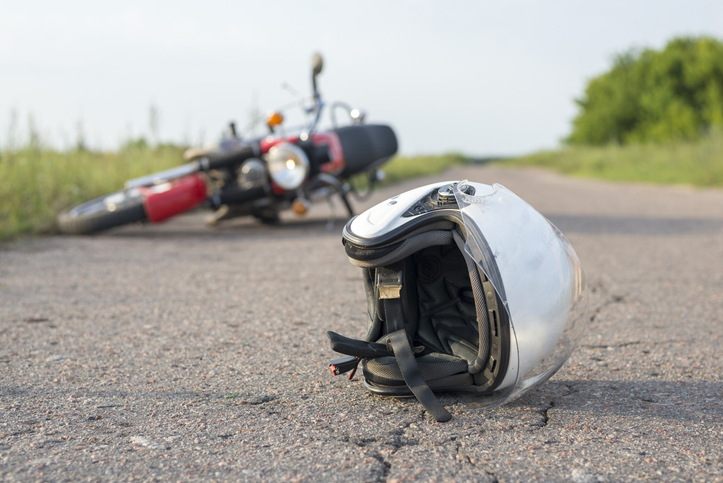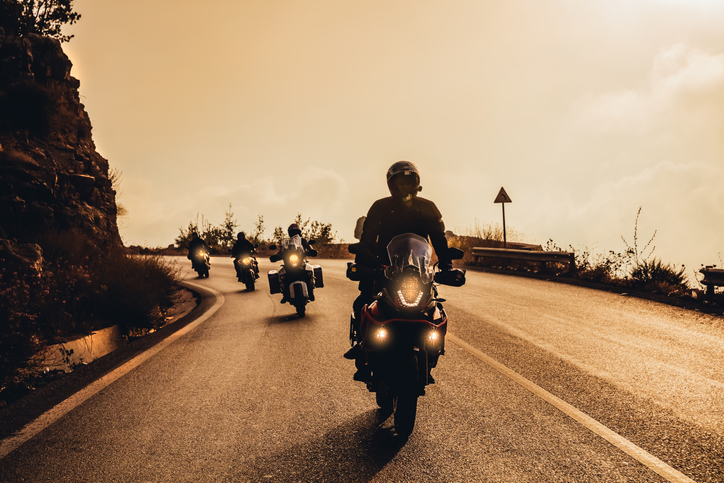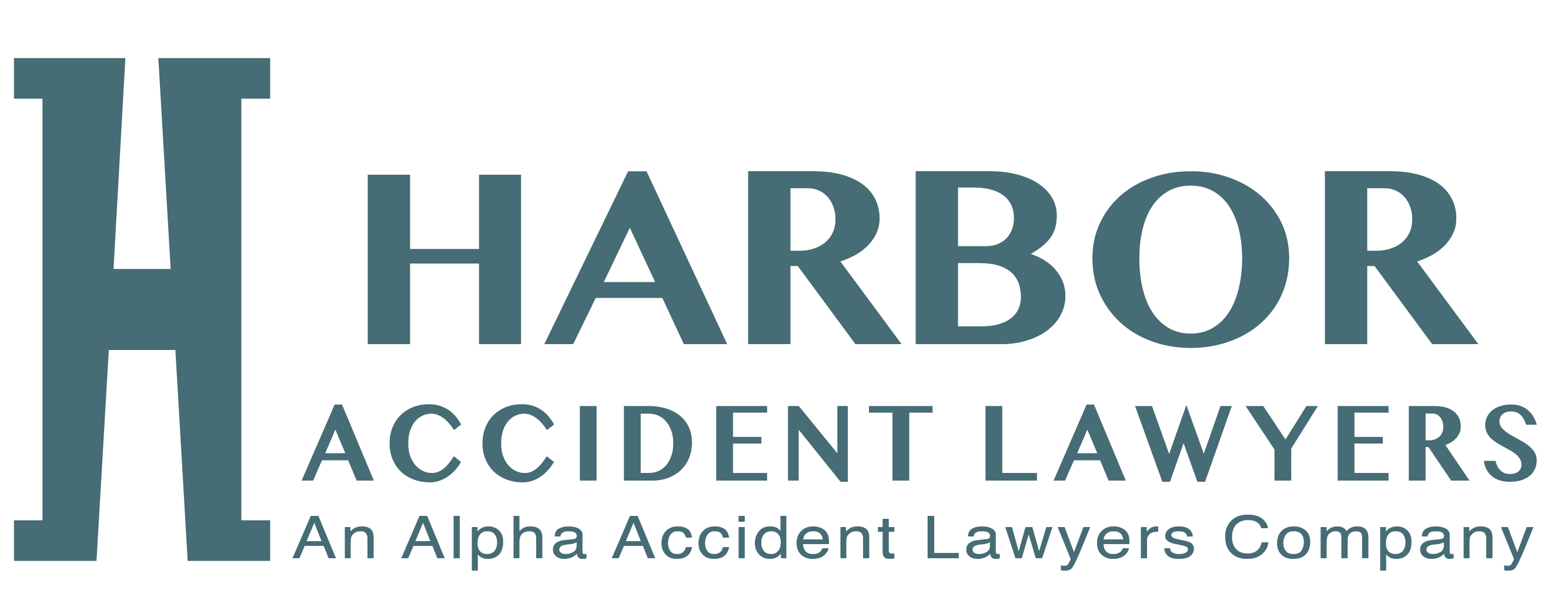
Motorcycle accidents tend to be severe due to the lack of protection and the small size of motorcycles in comparison to passenger vehicles. Understanding where most motorcycle accidents occur is crucial for rider safety.
Whether in bustling urban areas, on non-interstate rural roads, or on fast-paced highways, recognizing high-risk locations can help motorcyclists identify potential hazards and reduce the risk of motorcycle accidents.
Urban vs. Rural Locations
Motorcycle accidents occur in both urban and rural locations, but the risk factors often differ between these environments. In urban areas, such as cities and densely populated towns, the close proximity of vehicles, motorcyclists, and pedestrians increases the likelihood of auto accidents. Intersections, busy streets, and congested traffic greatly contribute to the risk of motorcycle crashes. According to the NHSTA, 61% of motorcycle fatalities occurred in urban areas compared to 39% in rural areas.
On the other hand, driving in rural areas also presents its own unique challenges. The roads may be narrower, winding, and less maintained. Wildlife crossings, dangerous roads, and poor lighting can lead to motorcycle crashes on rural streets. Both urban and rural areas require motorcyclists to always remain alert and aware of potential road hazards. Notably, most fatal motorcycle accidents, whether in urban or rural areas, occur on non-interstate roads.
Traffic Intersections
Traffic intersections are notorious hotspots for motorcycle accidents. At intersections, vehicles travel in various directions from different lanes of traffic, often at varying speeds. Factors such as drivers running red lights, making sudden turns, or failing to yield right-of-way can lead to serious motorcycle accidents. In 2020, 35% of motorcycle fatalities occurred at intersections.
Motorcycle riders are particularly vulnerable at intersections due to their smaller size, which might make them less visible to other drivers. Ensuring proper signaling, obeying traffic laws, and cautious maneuvering are essential for motorcyclists to navigate intersections safely.
Non-Interstate Roads
Most motorcycle accidents occur on non-interstate roads, including local streets and secondary highways. In 2020, 92% of fatal motorcycle crashes happened on non-interstate roads. These kinds of roads can present unexpected hazards like potholes, debris, and uneven surfaces. In comparison, major highways are typically better maintained than non-interstate roads. The absence of dividers or barriers on non-interstate roads also increases the risk of head-on motorcycle crashes.
Interstate Roads
While interstate roads or highways are often better maintained and contain barriers, they are not immune to motorcycle accidents. Interstates’ high-speed nature means collisions can be more severe, resulting in more severe injuries. Motorcyclists on interstates should maintain a safe following distance, use proper signaling, and stay alert to changing traffic conditions.
Highway Exits and Entrances
A large number of motorcycle accidents happen at highway exits and entrances. Rapid changes in speed as vehicles enter or exit the highway can be especially dangerous for motorcyclists. Additionally, merging lanes can create situations where drivers might not notice motorcyclists alongside them, leading to dangerous merging accidents. Motorcyclists should be extra cautious when navigating these areas and use defensive driving techniques to anticipate the actions of other motorists.
Two-Lane Roads
Two-lane roads, often found in rural areas, can pose significant risks to motorcyclists. Narrow lanes and limited visibility around curves can increase the risk of head-on collisions. These roads may also lack guardrails, paved shoulders, or safe areas for passing slower vehicles. Motorcyclists on two-lane roads should prioritize visibility, use proper gear, avoid risky passing maneuvers, and stay within safe speed limits.
California Motorcycle Accident Statistics

California, with its expansive road networks and diverse landscapes, unfortunately, witnesses a high number of motorcycle accidents. According to the California Office of Traffic Safety (OTS), motorcycle fatalities increased 3% from 2020 (549) to 2021 (565). The state’s urban hubs like Los Angeles and San Diego present challenges such as heavy traffic and complex road systems. In San Diego County there were 1,246 motorcycle injuries and fatalities in 2021 alone.
August Is the Most Dangerous Month for Motorcyclists
Among the various factors affecting motorcycle accidents, recent data shows that August tends to be the most dangerous month for motorcyclists. Over 14% of fatal motorcycle crashes occur during this month.
August marks the peak of summer when more pedestrians and motorists are out on the roads. Increased travel, recreational activities, and events contribute to higher traffic volumes. Additionally, more motorcycle accidents tend to occur in states with warmer climates and longer riding seasons, like California.
What Are the Most Common Causes of Motorcycle Accidents?
Understanding common causes of motorcycle accidents can help riders anticipate risks and take preventive measures.
Distracted Driving
Distracted driving is a leading cause of motor vehicle accidents. When motorists engage in activities like texting, eating or drinking, or conversing it increases the risk of serious accidents.
Speeding
Speeding is a form of reckless driving that significantly reduces a motorist’s reaction time and increases the severity of accidents. About 34% of fatal motorcycle accidents happen due to speeding.
Failure to Yield
Failure to yield the right-of-way, especially at intersections and highway entrances, can lead to dangerous and potentially fatal crashes.
Driving Under the Influence
Driving under the influence of alcohol or drugs significantly impairs a driver’s judgment and coordination, posing a serious danger to other road users. In 2020, 27% of fatal motorcycle accidents involved alcohol-impaired motorists.
How a Motorcycle Accident Lawyer Can Help

Motorcycle accident victims often deal with serious injuries, costly medical bills, property damage, and pain and suffering. An experienced motorcycle accident lawyer understands the intricacies of these cases and can help victims pursue fair compensation for their losses. Personal injury attorneys can gather compelling evidence, establish liability, and negotiate with insurance companies on behalf of the injured party.
Contact an Experienced Motorcycle Accident Attorney Today
If you or a loved one is involved in a motorcycle accident, don’t hesitate to reach out to an experienced motorcycle accident attorney. By seeking legal representation, personal injury victims can focus on their recovery while their legal rights are protected. At Harbor Accident Lawyers, our San Diego motorcycle accident lawyers possess the knowledge and expertise to navigate complex motorcycle accident cases.
Time is of the essence in personal injury cases, so it’s best to seek medical attention promptly, and then consult with a personal injury attorney. Call our San Diego personal injury office today to schedule a free consultation.
